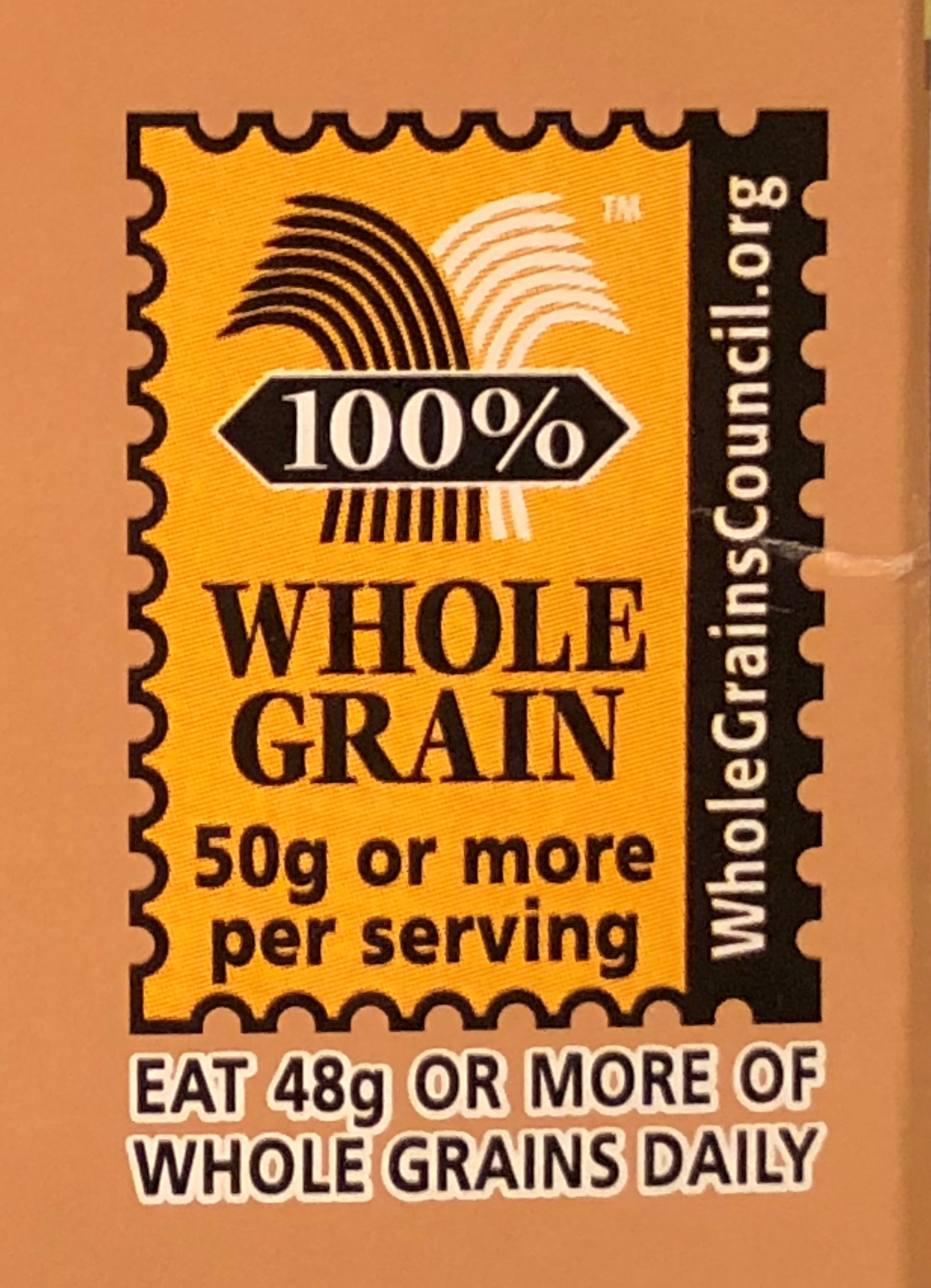
by Marie Arick | Aug 23, 2018
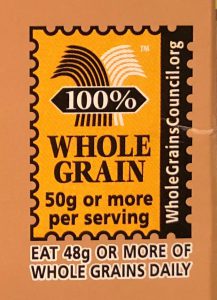
Photo credit: Marie Arick
Many Americans are more aware of whole grain food consumption as part of a healthy meal plan. In fact, the International Food Information Council’s 2015 survey found that 67% of those surveyed reported reading product labels for whole grains when shopping for packaged foods.
So, what is a whole grain? A whole grain must contain the germ, the bran, and the endosperm in the same state as it was in the field prior to harvest. Generally, most associate fiber with whole grains. In contrast, a refined grain lacks the germ and the bran that contain the fiber, B vitamins, antioxidants, and minerals. Take whole wheat, for example – it contains the trace minerals iron, zinc, copper, and magnesium, antioxidants, folate, and the following B vitamins – niacin, thiamine, and riboflavin.
Why choose whole grains? The fiber content can help to maintain a healthy weight, as it bulks once consumed, and can make one feel fuller, hence consuming fewer calories. Additionally, the fiber can aid with constipation. Other benefits of eating a diet rich in whole grains include decreasing the risk of developing type 2 diabetes, heart disease, and some forms of cancer due to the nutritional content, namely the antioxidant properties.
How much is enough? Children ideally should consume two servings minimum and adults three servings minimum each day. It is ideal for at least half of the grains you consume to be whole grains. Look for the 100% Whole Grain stamp on labels while shopping. It is a now on over 12,000 products, including cereals, breads, chips, flour, pasta, and so much more, in 58 countries.
Understanding what whole grains are and why choosing them can aid with health and well-being is important. Challenge yourself to look for the whole grain stamp and increase your daily intake, for your health.
Resources

by Angela Hinkle | Aug 23, 2018

Healthy Pantry
Photo Source: Angela Hinkle
We eat to survive, right? Yes, but when you really think about it, we eat to thrive. Food is more than calories for energy. Food brings family and friends together. It provides comfort. It makes our bodies healthy and can protect us from diseases. The next time you give to a food pantry, think about what you can give to help those in need thrive, not just survive. So, how do you donate food to thrive?
A Balanced Diet
It’s important to eat from every food group every day. It’s important to give those in need the chance to eat every food group every day. This way, they get a variety of nutrients needed for healthy bodies. Choose healthier choices from each food group. See https://www.choosemyplate.gov/ for more information.
Fruits & Veggies: Half MyPlate
- Fruits and vegetables provide so many good vitamins, minerals, fiber, and water.
- All forms count – canned, frozen, fresh, dried, and juice.
- Canned fruit in 100% juice (Lite or heavy syrup equals a little or a lot of added sugar.)
- Juices that are 100% fruit or vegetables.
- Low- or no-sodium canned vegetables (Higher sodium intake tends to go hand-in-hand with higher blood pressure.)
- Try to stay away from high-fat, high-sodium, and high-sugar syrups and sauces.
- Packaged dried fruits and veggies are both popular now.
- The more fruits and vegetables, the better!
Whole Grains
- The whole edible part of the grain plant gives us fiber and loads of nutrients to keep us healthy. They even have special parts that help fight diseases.
- Look for the word whole at the beginning of the ingredient list.
- Help pantries stock whole grain crackers, hot and cold cereals, and tortillas. Donate whole grain pasta and brown rice.
Lean Proteins
- Protein helps build and repair tissue.
- Protein provides the building blocks of muscles, bones, skin, and blood.
- Go for lower-sodium and lower-fat choices. (Most of us over the age of two don’t need that extra fat.)
- Donate tuna, chicken, or salmon in water.
- Peanut butter is always popular.
- Try offering a variety of packaged seeds and nuts.
Dairy
- The calcium in dairy foods makes strong bones and teeth.
- Try low-fat versions of shelf-stable milk.
- Non-fat dry milk is great for sauces and casseroles as well as drinking. (If used for drinking, it tastes best to add the coldest water possible.)
- Low-fat yogurt and cheeses are a nice complement for pantries with refrigeration.
- For those who can’t have dairy, offer calcium-fortified soy or almond milk, cereal, or orange juice.
So don’t just think “feed them” when you donate, think “feed them well.” Donate beyond survive. Donate to thrive.

by Angela Hinkle | Jul 11, 2018
The pickin’ is plentiful and life is good. Now is the time to take advantage of summer’s bounty. Summer produce is colorful and healthy. It tastes amazing. And right now, it’s everywhere!
Fruits and Veggies in Season
Buying summer produce now means you get fruits and vegetables that taste their best. See Panhandle Produce in Season for what’s in season in the Florida Panhandle. Because this is the easiest time to grow them, they also cost less than at other times of the year. You also may get to learn more about where your food comes from. This is a great time of year to buy local. Speaking of which…

Visit a U-Pick farm for fresh, local produce.
Photo source: Alex Hinkle
U-Pick Farms
When’s the last time you or your kids picked your own food? U-Pick farms are a great way for the whole family to enjoy the outdoors. (Hint: for max comfort and safety, go in the earliest/coolest part of the day.) Picking from a U-Pick helps you get delicious food at a good price. It also helps local businesses thrive. You can meet the local farmers in your area. You usually can get easy, tasty recipe ideas and you can even make new friends. (Working to pick your own food also can make you appreciate how hard it is to have the job of farmer.) To find the closest U-Pick farm in your area, contact your local UF/IFAS Extension Office.
Save Some for the Colder Months
Whether from a U-Pick, farmer’s market, or grocery store, sometimes you just can’t eat all that great produce right now. What to do? Canning or freezing are excellent options. For information on freezing vegetables, see UF IFAS Freezing Vegetables. For fruits like berries, rinse berries well and let them dry on paper towels. Place in plastic zippered bags and freeze. Then just take out the amount you need for blueberry muffins in January – Yum! Or if you live in the South, it’s easy to make cold smoothies in the blender any time of year.
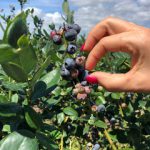
Fresh-picked blueberries are perfect in smoothies and salads.
Photo source: Alex Hinkle
Half MyPlate
The USDA (United States Department of Agriculture) recommends half of your plate be fruits and veggies. Eating in this way gives your body the nutrients it needs to get healthy and stay healthy. Vitamins, minerals, water, and fiber are packed into summer produce. Eat a variety. Try produce in every color, texture, shape, and size. To pack a tasty, healthy wallop for your next meal, make a hot multi-veggie hash alongside a cold refreshing fruit salad. For more ideas on how to add more fruits and veggies into your day, go to Liven Up Your Meals with Fruits and Veggies.
Summer’s Bounty – get it now, enjoy it now!
by Melanie Taylor | Jul 8, 2018
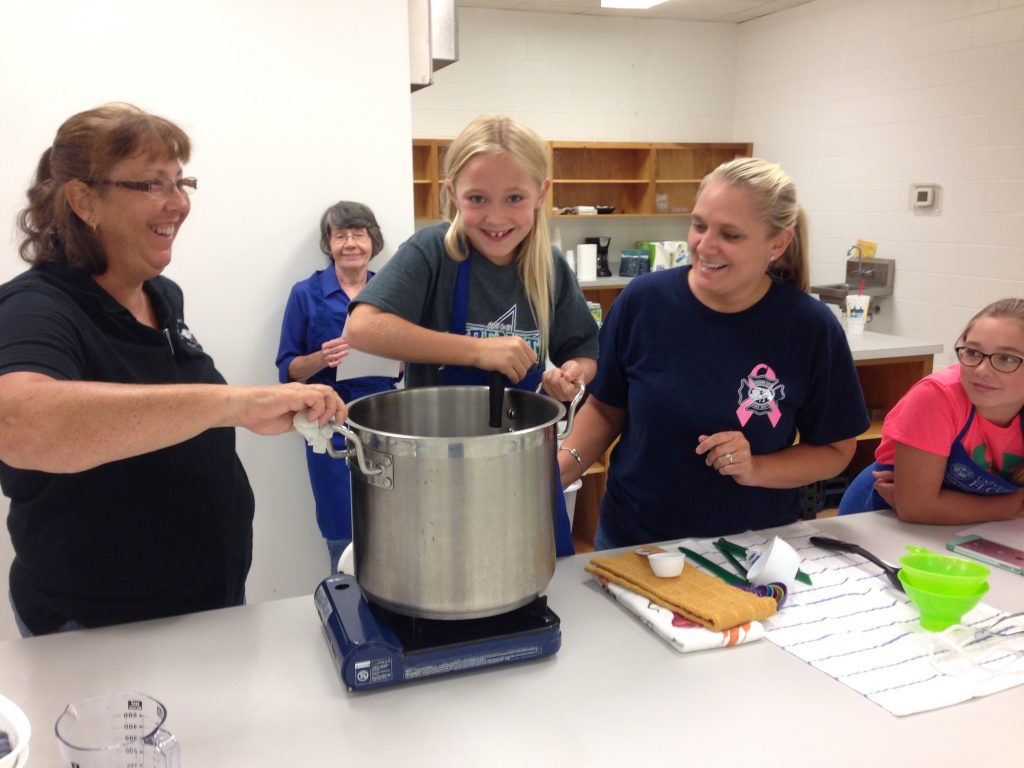
Youth learn food preservation skills. Photo source: Melanie Taylor
At this point in the summer, many parents are at a loss for what to do to keep their children engaged and “off the couch.” How about a focus on healthy eating and food preservation? If you have a backyard garden be sure to pick the fruits and vegetables at their peak readiness. If you do not have a garden make a family trip to the local farmers market and/or a local u-pick farm.
Of course, fresh fruits and vegetables are full of nutrition and taste, but if you have or buy more than your family can eat in a few days’ time, be sure to make preparations to teach your children how to preserve those foods to eat later in the year. There is nothing more enjoyable than having fruit jam on biscuits or summer vegetables in your soup during the cold depths of winter.
There are six different methods of food preservation to teach your children. They are boiling water/water bath canning, making jam, pickling, freezing, drying, and pressure canning. The easiest method being freezing and the most complex and time consuming being pressure canning. No matter which ones you choose to teach your children be sure to follow valid recipes and procedures. Family and Consumer Science Extension Agents always recommend using the most current recipes and procedures from The National Center for Home Food Preservation, which are maintained at https://nchfp.uga.edu/. The National Center for Home Food Preservation is your source for current research-based recommendations for most methods of home food preservation. The Center was established with funding from the Cooperative State Research, Education and Extension Service, U.S. Department of Agriculture (CSREES-USDA) to address food safety concerns for those who practice and teach home food preservation and processing methods. Many of the recipes are available for free on the website, or you can order the 6th edition of the “So Easy to Preserve” food preservation book at https://setp.uga.edu/.
Specific to children, there is also a Put It Up! Food Preservation for Youth curriculum through the University of Georgia, which is a series of informal educational lessons that guide youth to explore and understand the science of safe food preservation. This free curriculum can be found online at https://ugeorgia.ca1.qualtrics.com/jfe/form/SV_a5Y4IfBZ2Vh0EIt after a quick questionnaire of how you plan to use the curriculum.
Teaching these food preservation skills to your children will be a fun-filled and very educational opportunity. Be sure to use the above resources to assist you in the food safety methods to be certain your products are safe for consumption. Enjoy this special time in the garden and kitchen with your children this summer.
Resources:
National Center for Home Food Preservation https://nchfp.uga.edu/
“So Easy to Preserve” https://setp.uga.edu/
Put It Up! Food Preservation for Youth https://ugeorgia.ca1.qualtrics.com/jfe/form/SV_a5Y4IfBZ2Vh0EIt

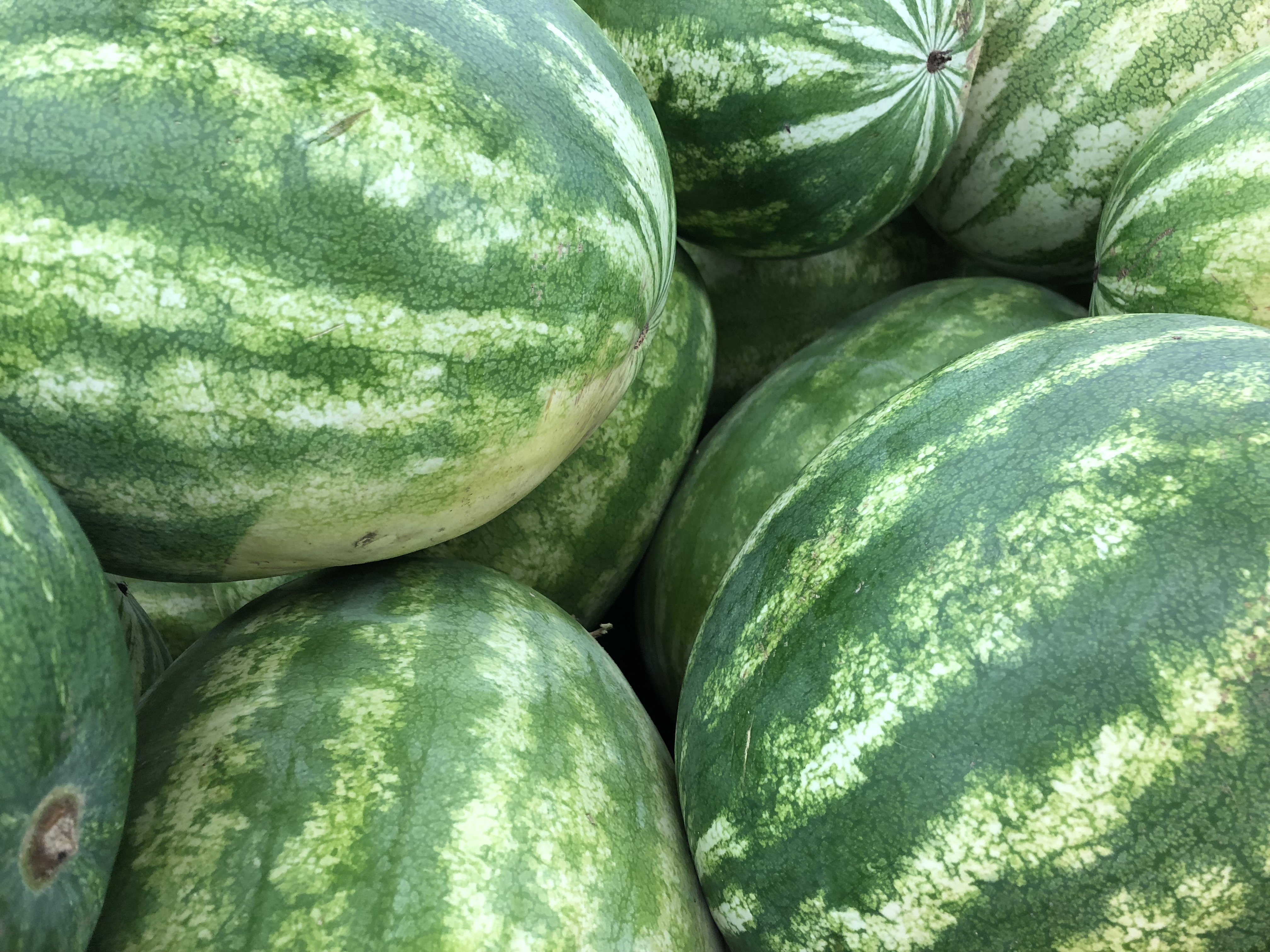
by Melanie Taylor | Jul 8, 2018
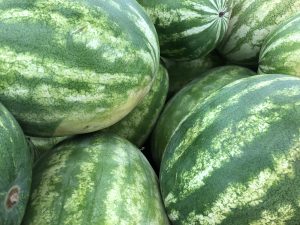
Watermelons are nutritious and help to keep you hydrated.
Photo source: UF/IFAS Northwest District
We tend to think of watermelon as a summer fruit and that is because in Florida, you can find watermelons growing from late spring through mid-summer. “Fresh From Florida” watermelons are available in stores and roadside markets from April through July. Time is running out this summer to have a fresh Florida watermelon, so be sure to get them soon.
Why is watermelon such a popular fruit? One, it is in high abundance during the summer and can be found in most stores. Watermelon also tends to appeal to those with a “sweet tooth,” but it’s still healthy. Red watermelon is a good source of lycopene, which gives watermelon its color (and tomatoes, too). Lycopene is an antioxidant that helps protect the body against heart disease, inflammation, and some cancers.
Watermelon also is a good source of vitamin C and contains vitamin A. Vitamin C is an antioxidant, helping to protect cells from the damage caused by free radicals. Free radicals are compounds formed when our bodies convert the food we eat into energy. People also are exposed to free radicals in the environment from cigarette smoke, air pollution, and ultraviolet light from the sun. The body also needs vitamin C to make collagen, a protein required to help wounds heal. In addition, vitamin C improves the absorption of iron from plant-based foods and helps the immune system work properly to protect the body from disease. Vitamin A is important for normal vision, the immune system, and reproduction. Vitamin A also helps the heart, lungs, kidneys, and other organs work properly.
Probably most impressive is that watermelon is fat free, sodium free and cholesterol free, so we all should feel good about eating it. In addition, as the summer heat continues to increase, we need to drink more water to stay hydrated. Well, watermelon is 92% water, so eating it is an additional way to hydrate. In fact, early explorers used watermelons as canteens.
Here is a technique to know you have chosen a ripe watermelon. Ripe watermelons have a yellow or cream-yellow “ground spot” where the melon rested on the soil. If this spot is green or white, the watermelon probably is not ripe. In addition, once you have selected a ripe melon, a whole watermelon will last in the refrigerator for up to a week.
Before cutting your watermelon, be sure to wipe it with a clean cloth and light, soapy water and then rinse it off. This will prevent you from dragging any bacteria, etc. on the skin through the fruit as you slice it. Once cut, the melon should be kept refrigerated and covered with plastic wrap. If the watermelon flavor is not quite what you expected, you can enhance the flavor by adding a squeeze of lemon juice, honey, or chopped mint.
Be sure to excite your taste buds this summer by biting into a cold, sweet, juicy slice of watermelon. Feel confident in selecting your ripe watermelon and enjoy it, knowing you have made a healthy choice in your food selection.
A Few Fun Facts: (www.freshfromflorida.com/farmtoschool)
- Watermelon seeds are a good source of healthy fats and protein, which help your muscles grow.
- Florida leads the United States in watermelon production.
- Watermelons have been in production since around 2000 BCE.
- Seedless watermelons have been growing in the United States for over 40 years.
- Some countries, like Japan, grow square watermelons.
- Watermelons can have up to a thousand seeds, which can be black or white.
- As it matures, the watermelon’s insides transform from white to red or pink.
- You can eat the crunchy rind and seeds of a watermelon.
- According to John Mariani’s The Dictionary of American Food and Drink, the word “watermelon” first appeared in English dictionaries in 1615.
- Watermelon is the most consumed melon in the United States.
Resources:
Florida Department of Agriculture and Consumer Services
Fresh From Florida
Florida Farm to School
Living Healthy in Florida









